The History Of Futsal And Its Rise In The United States
Futsal is well known all over the globe. It's huge in South America, Africa, and Asia. The sport is finally becoming the United States choice of indoor soccer. The sport is backed by endorsements by the United States Youth Soccer nationally, as well as, FIFA worldwide. Futsal is gaining more acceptance and recognition from coaches in the United States who are in search of a more climate controlled environment to the classic outdoor game.
Futsal wasn't always a recognized sport in the United States, in fact, Americans didn't begin following the indoor sport until the 80s and 90s, which is over 50 years after the sport was developed. Juan Carlos Ceriana designed this form of outdoor soccer in 1933 in Uruguay. 3 years later the official rule book was published. According to FA.com Ceriana developed this style of indoor soccer when he was developing an indoor soccer field for the YMCAs in the country.
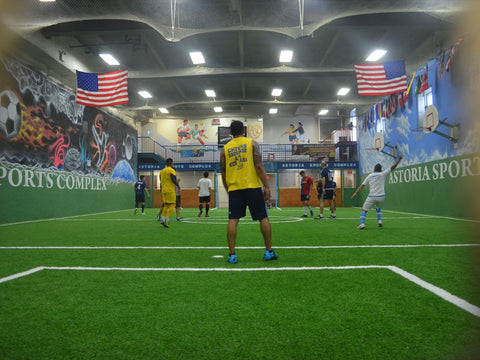
Leagues such as the MISL spread the game of indoor soccer creating the popularity. Now FIFA and U.S.Y.S. require players to have a certain amount of Futsal play each season. You can find some interesting points on the subject on this article by Soccer Wire. This is mostly because of the fact that unlike other forms of indoor soccer in Futsal there are no walls, just out-of-bounds lines causing players to get a handle on their control.
How Futsal Differs From Other Forms Of Indoor Soccer
Indoor soccer is generally played on an artificial turf field with the standard sized soccer ball. The soccer field is surrounded by walls similar to the ones used in ice hockey. The players can benefit from the use of the walls to set up passes and make rebound shots. "Hockey-rink" style soccer can sometimes be dangerous because players can sustain injuries slamming each other into the walls.
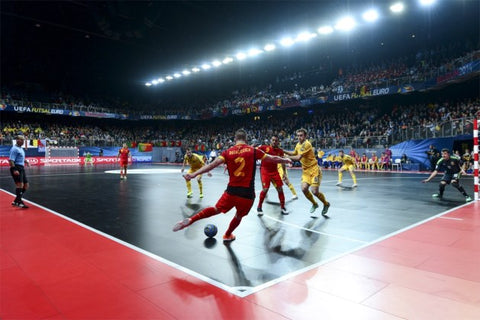
Futsal differs from indoor soccer in several ways. The futsal field is more compact than the typical artificial turf and is similar to a basketball court in size and surface. The ball is smaller than the standard soccer ball, a futsal ball is a #4 and is 62-64 cm in circumference. Because of the different surface, there is less bounce. Futsal is also called 5-sided soccer and this is because the game is 5 on 5 as opposed to the regular play of 11 on 11 out on the field. The court measures the following dimensions: 25-42 m long x 15-25 m wide. The court is typically surfaced with wood similar to a basketball court.
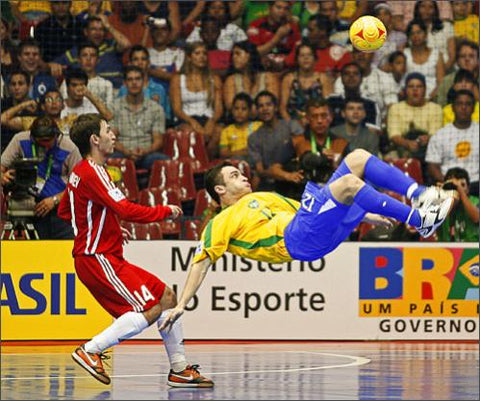
Futsal has found its way into the US and the interest is rising fast. The acknowledgement, recognition, and participation may have started at a slow pace but the following is increasing as are the participants. Since Futsal is on the rise, we decided to talk to none other than Mr Keith Tozer, one of the most influential and successful indoor and futsal players and coaches the US has had and still has today.
Interview With All-time Winningest Indoor Soccer Coach- Keith Tozer
Bownet: When did you fall in love with the game of Futsal?
Keith: I grew up with outdoor and indoor soccer. In 86’ my former professional indoor coach and the U.S. Futsal Men’s National Team Head Coach John Kowalski, invited me to try out for the USFMNT. The first FIFA tournament was in Budapest Hungary and was a fantastic experience representing our country and experiencing Futsal for the first time. All of us fell in love playing this high scoring, constant action, rapid pace game and to play against Brazil, Hungary and Holland, …… it truly was an amazing experience.
In 1996 was the first CONCACAF Futsal qualifier in Guatemala and coach Kowalski now was coaching the Tampa Bay Mutiny in the MLS and was unable to make the tournament. He again asked me to be a part of the team but this time in the role of interim head coach.

Bownet: What do you think is the major effect of regular indoor with walls vs no walls in futsal?
Keith: The accuracy of the passing. In outdoor you miss a pass, ball goes out and it’s a throw in. In indoor, someone may miss a pass but still win the ball back with their physicality. With Futsal it’s the same as outdoor except on a much smaller scale, therefore, passing has to be much more accurate. If the ball goes out it’s a kick-in for the other team so you need to make sure your pass is perfect.
Bownet: Tell us about how Futsal help you in coaching the Milwaukee Wave?
Keith: I started coaching Milwaukee in 1992 for the Milwaukee Wave which at the time was one of 10+ teams in the league (NPSL, National Professional Soccer League).
We would always have a great regular season, but struggled to advance past the first round of the playoffs. In 96’, I become the interim coach of the USFMNT in Guatemala. This is where I started immersing myself into the methodology of coaching the game of Futsal. NSCAA Coaches Convention, coaching seminars, books, videos, are all about outdoor soccer. Where do you go to learn to coach indoor soccer? I took full advantage of our international trips to learn as much as I could from all the international coaches about Futsal and then to adapt those concepts to indoor soccer.
In 98’ the Wave won their first indoor championship and we went on to participate in eight (8) more finals winning five (5) more for a total of six (6).
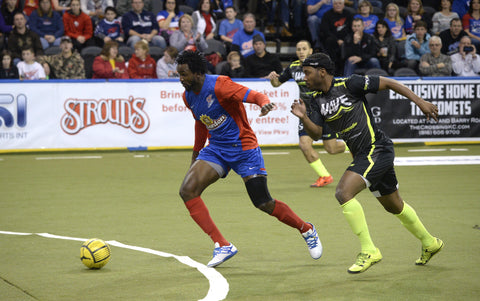
Bownet: Tell us about the rise of Futsal in Milwaukee and how it’s affecting local communities
Keith: Futsal has grown at the grass roots level here in Milwaukee and across Wisconsin at a rapid pace. The company we have Wisconsin Sports Group offers youth leagues, coaching education, Futsal Academies, tournaments, exhibition games and tennis court renovation projects similar to the Lincoln Park Futsal Stadium we just completed.
Bownet: Tell us where Futsal is today in the U.S.
Keith: I always say it like this…. I’ve been trying to sell this vacuum cleaner called “Futsal” for the past 20 years and one out of every one hundred would buy it. Now I can’t even keep it in stock. You’re seeing Futsal everywhere. U.S. Soccer has recently proclaimed that Futsal will be a part of our player’s youth development, U.S. Soccer Foundation, MLS and other entities are building courts in our inner cities and suburbs and of course we now have the Professional Futsal League, PFL.
Bownet: Where do you see Futsal in 3 Years?
Keith: I see the PFL being extremely important to the growth of the game here in North America. The PFL will provide many opportunities for front office personnel, coaches and players. You will see the PFL clubs create Futsal academies and help with the coaching education of Futsal within their communities as well as nationally. I believe we will see it on national television and will also help develop that special player for the outdoor game.
I see Futsal growing rapidly in the inner cities and potentially into all city recreation centers and eventually in the Olympic Games. Mark Cuban has become a major investor into the PFL and the game of Futsal which I firmly believe is a huge vote of confidence in the league and the sport overall in the US.
Bownet: What are your thoughts on the Bownet Futsal Goals.
Keith: Everything starts at the top for a successful company. I’ve known Mark Botteril (Bownet COO) for 20 years and he brings passion and integrity to the game and sports.
After that it’s all about service and product. I love the Bownet product. The ability to be able to use the net everywhere, be it outdoor, indoor, grass, anywhere…. Simply the ability to create a soccer or Futsal game at any point and any moment is huge. I think that Bownet can play a large role in the movement of Futsal across the country and will grow along with the sport.


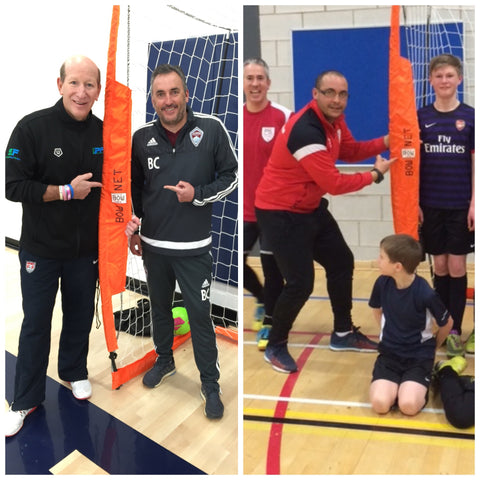

Leave a comment